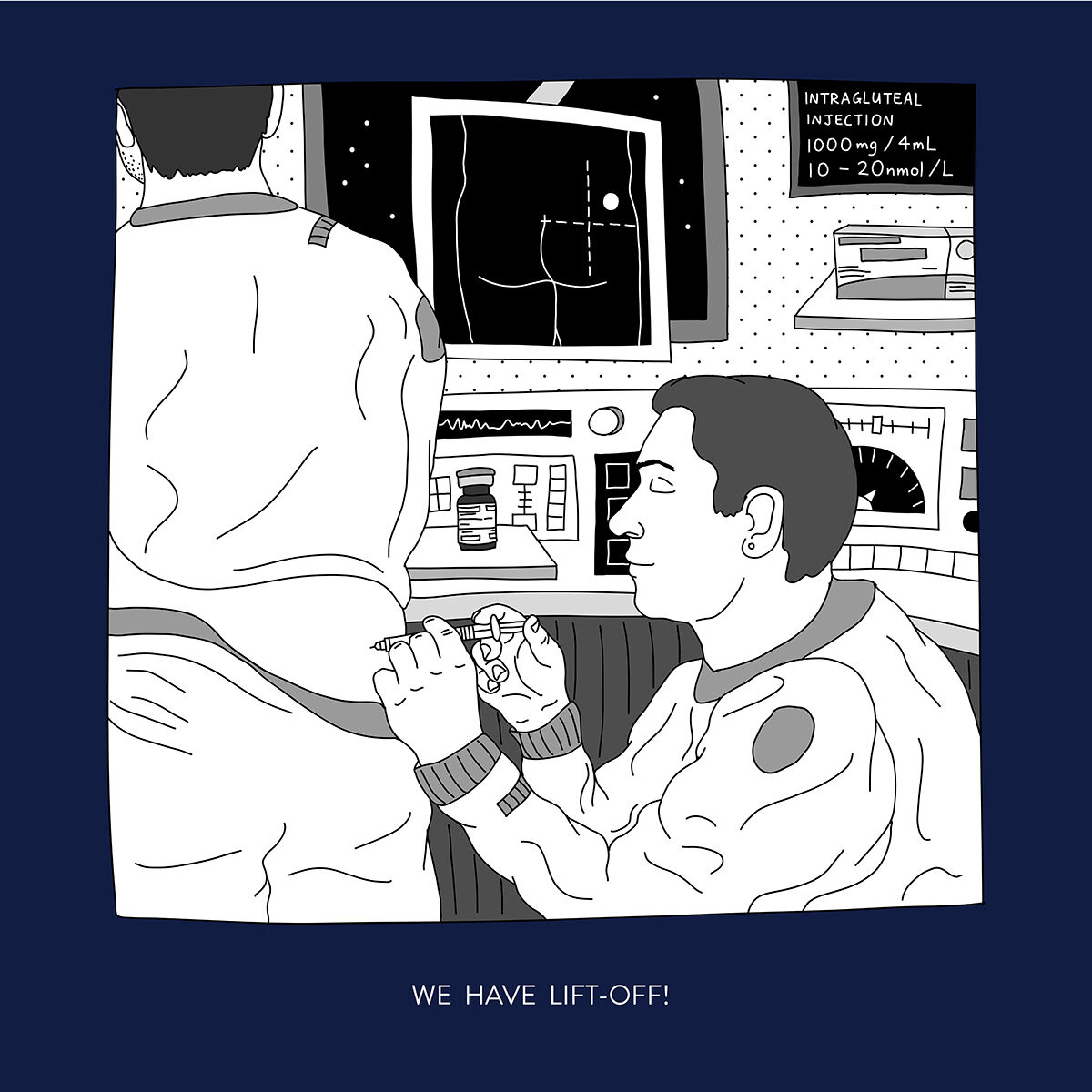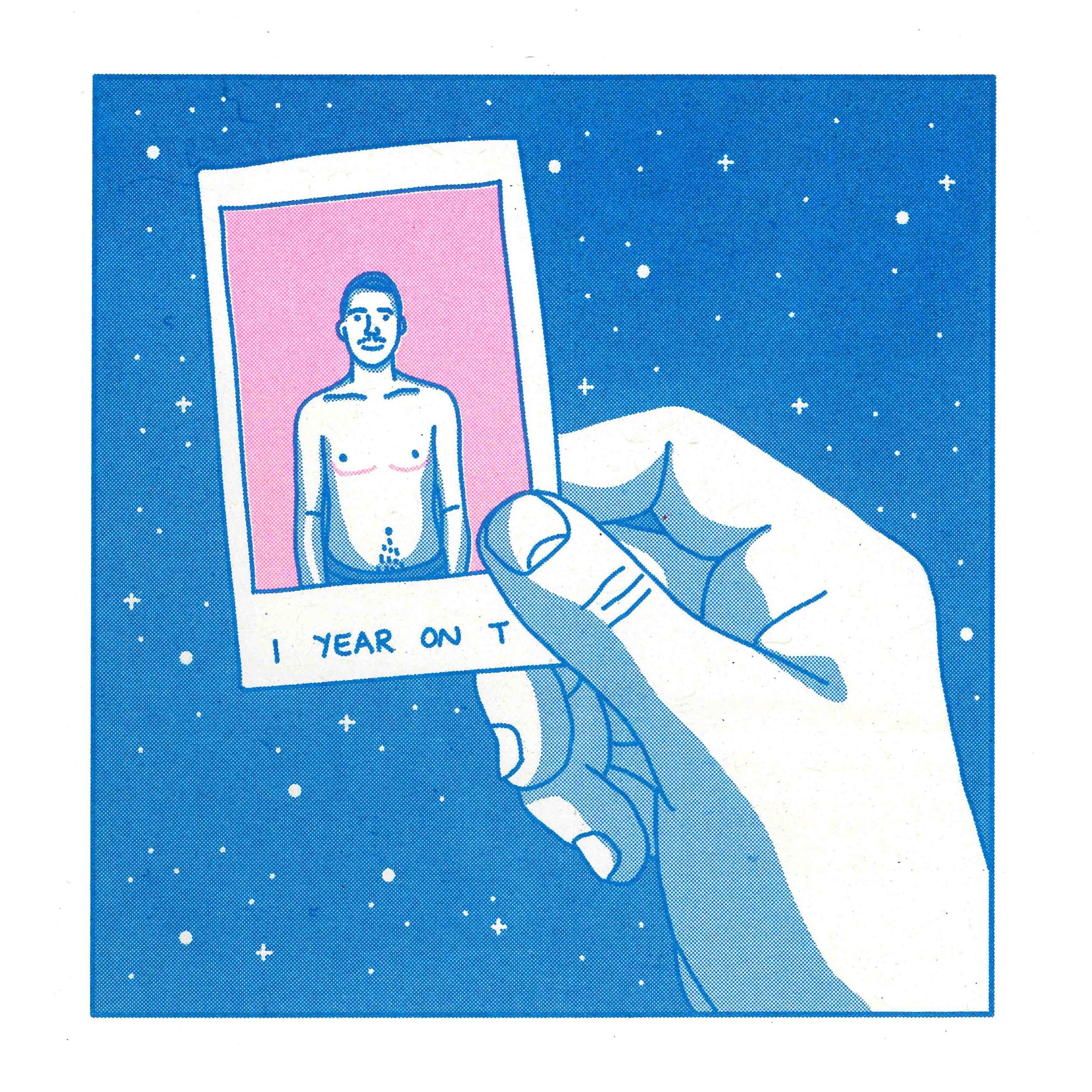Steps To Getting Testosterone Ftm
Hormones - Masculinising
Hormonal gender affirmation is an important part of many trans and gender diverse people's lives. Masculinising hormones are typically used by trans people who were presumed female at birth (PFAB), including men and non-binary people.
Masculinising hormones are testosterones. The physical and psychological effects testosterone has on the body depend on the type of testosterone prescribed as well as personal factors including your age, body, hormonal history, any existing contraindications, and what you want to take. Generally though, using testosterone is a very effective way of masculinising your body.
TransHub uses the terms masculinising and feminising hormones to describe the effects that hormonal affirmation has on bodies, but not to describe the genders of the people using them. You can be a man who uses masculinising hormones, you can also be non-binary and use masculinising hormones as well, there is no one correct form of hormonal therapy. Being on testosterone isn't the thing that makes you, you. Who you are is always valid.
Information and resources to assist clinicians learn more about masculinising hormones can be found here.
Types of masculinising hormones
Testosterone (sometimes just known as 'T') is not generally used in combination with estrogen hormone blockers.

Testosterone
Testosterone is a sex hormone (steroid hormone) that influences fat cells, bones, some muscles, skin, and hair. Testosterone can also affect mood, energy levels, and sex drive.
Some people will take a full dose of testosterone, and others a low dose, or somewhere between the two. Some will prefer a longer cycle between injections or applications, others will find a shorter cycle fits best. Talk with your doctor about the outcomes you want, and you can work with them to find the dose that feels right for you.
If you're on a particular dose and it doesn't feel like it's working or feeling right, you can ask to change it up or try something new - no one is in your body but you.
Testosterone is usually taken in one of the following forms:
Injections - an intramuscular injection administered regularly, either by a medical practitioner, or by you or a friend who has been shown how to do injections. Check out this handy injection guide [PDF].
This could be either Reandron (3 monthly), Primoteston (fortnightly), or Sustanon. Some forms of testosterone injection are covered on the PBS.
Gels and creams - a cream or gel that is applied to the skin daily as directed. Some testosterone gels and creams are covered on the PBS.
Implants - testosterone pellets that are inserted into the body and can last for several months. Implants are not covered on the PBS and can only be manufactured by a compounding chemist.
Other hormonal health concerns
Topical estrogen - sometimes taken for atrophy of the vagina/front hole. Being on testosterone can decrease the natural lubrication of the vagina/front hole, which can make that part of the body uncomfortable not only during sex, but everyday activities and other important things like cervical screens and sexual health testing.
A topical estrogen applied directly can help solve this problem, without estrogen finding its way into the rest of the body. Using a topical estrogen has no effect on masculinising.
Progesterone - sometimes taken to assist in stopping menstruation. A small amount of progesterone in combination with testosterone can help make sure you don't get a period.
Effects on primary and secondary physical characteristics
Body shape and size
Depending on when masculinising hormones are started, they can promote a shift in the size of muscles and bones in the body, including but not limited to an increase in hand or shoe size, or growing slightly taller. The effectiveness of masculinising hormones can decrease with age.
Fat distribution
Masculinising hormones will redistribute fat around the body. This includes but is not limited to shifting fat away from the hips, arse, and thighs to the stomach/abdomen.
Genitals
People on masculinising hormones may notice several changes to their genitals, including what is often called 'lower growth' of the clitoral shaft, the temporary or long term cessation of menstruation, and external or internal dryness or atrophy. These may be wanted or unwanted, and in the case of dryness or atrophy, potentially uncomfortable - if so, it's important to talk to your doctor as treatment is available for dryness.
Skin
Masculinising hormones stimulate the skin's oil glands, which can result in the skin being more oily as a result, and feeling a bit rougher than before. This can also result in an increase in acne or pimples, on the face and the body. If this becomes a problem or a frustration for you, you can talk with your doctor about how to help. Anti-bacterial body and face wash, used daily, can be helpful, as can a cleanse, tone and moisturising routine.
You may also find your body odour and sweat patterns change.
Hair
Masculinising hormones will stimulate hair growth on the face (eg. moustache and beard) and the body (eg. chest, arms, legs, stomach, arse, and back). This might also cause existing hair to darken or thicken. There's the possibility of an increase in male-pattern baldness, or hair loss at the temples and the top of the head (a bald spot) over time, and if this causes distress you can talk to your doctor about treatment options.
Sex drive
Many people report an increase in sex drive on masculinising hormones, whether a slight increase or a dramatic uptick. If unwanted, this can be shifted by adjusting testosterone levels with your doctor.

Voice
One of the common (and often wanted) effects of testosterone therapy is that it can lower your voice, especially with longer-term use. This change is permanent.
Researchers have found that testosterone is an effective way of lowering the voice, with a significant vocal decrease by 6-9 months after initiating testosterone therapy1. This research also found that most participants were satisfied with their voices after 12 months.
Some people experience vocal fatigue, difficulties with projection, singing, or other voice-related concerns. Vocal training in conjunction with masculinising hormone therapy is a great option to treat this.
Mood and mental health
There is no evidence that testosterone contributes to worse mental health outcomes. Many people find their mood, mental health and energy levels improve dramatically when starting gender affirming hormones.
You may find your emotional landscape shifting as you begin testosterone though. People often report finding it difficult to cry or express themselves in ways they've been used to. This will settle with time but if it feels hard or not okay, talking about it with peers or a professional can be really helpful, as can making sure you're getting plenty of sleep, eating well, moving your body, and staying hydrated.
Menstruation
Use of masculinising hormones over time can stop menstruation (periods) from occuring, or greatly reduce their regularity. For more information about managing menstruation, check out our page about it here.
Fertility
Testosterone therapy alone does not necessarily result in infertility, and the cessation of testosterone therapy can cause ovulation to reoccur.
Testosterone is also not always an effective form of contraception, and so other forms of contraception should be discussed with partners and/or doctors if you are having sex which carries a pregnancy risk.
If you are concerned about the possibility of infertility, or for more information about fertility options, visit our page on fertility.
Hormone levels
Regular blood tests will likely be requested by your doctor to check your levels and how they are changing over time. Your doctor will give you forms to get a blood test at clinics that are available across NSW. You can also have your hormones checked as part of a regular blood test, or while visiting trans[TEST]. Usually levels will be monitored 6 monthly, and then annually once your T levels and cycle have settled.
Prescribing guidelines 2 recommend "targeting trough total testosterone levels in the lower end of the male reference interval (10-15 nmol/L)". Trough means the lowest level of testosterone in the body, usually just before an injection or re-application.
These guidelines have been endorsed by AusPATH, the Endocrine Society of Australia (ESA) and the Royal Australasian College of Physicians (RACP).
Accessing hormones in NSW
To assist you in connecting with your doctor, we've prepared a number of templates you can print, complete and take with you. Below you will find a template to let an existing or new doctor know that you want to start or continue hormones, and to update your name, gender marker and pronoun, if required.
We've also included an example of an informed consent form for initiating masculinising hormones, as well as a GP Management Plan template. Your doctor may have a similar forms of their own, or you can print these out to work through together.
You are able to access hormones from your regular GP or Sexual Health Doctor. Hormonal affirmation and advice is not a specialist field, and does not require an expensive or difficult process, or access to a specialist to prescribe.
Accessing PBS-listed testosterone does currently require an additional step where either you, or your doctor will need to consult with an Endocrinologist, Sexual Health Doctor or Urologist. This only needs to happen once.
Your prescribing doctor will use the authority indication "androgen deficiency due to an established testicular disorder", which is accurate since our bodies don't naturally produce enough testosterone on their own. You don't need to be listed with Medicare as male in order to access PBS-listed testosterone.
If you are over 18, you do not have to see a psychologist or psychiatrist in order to access hormones, unless you want to or your doctor feels it would be helpful. For more information, go to this section.
For a list of doctors who support and understand trans people and our needs, check out ACON's Gender Affirming Doctor List, available here.
Under 18s
For trans or gender diverse people under 18, gender affirming treatment can be commenced when there is no dispute between parents (or those with parental responsibility), the medical practitioner and the young person themselves with regard to:
-
The Gillick competence of an adolescent; or
-
A diagnosis of gender dysphoria; or
-
Proposed treatment for gender dysphoria
Any dispute requires a mandatory application to the Family Court of Australia as per the judgement of Re Imogen 2020.
The Australian Standards of Care for trans and gender diverse children and adolescents state that seeing a mental health professional is a necessary part of accessing gender affirming hormones as a young person.
The Standards of Care state that the following 3 criteria must be met:
-
A diagnosis of Gender Dysphoria in Adolescence, made by a mental health clinician with expertise in child and adolescent development, psychopathology and experience with children and adolescents with gender dysphoria.
-
Medical assessment including fertility preservation counselling has been completed by a general practitioner, paediatrician, adolescent physician or endocrinologist. This assessment should include further fertility preservation counselling by a gynaecologist and/or andrologist as required with referral for fertility preservation when requested.
-
The treating team should agree that commencement of estrogen or testosterone is in the best interest of the adolescent and informed consent from the adolescent has been obtained.
For more information about your legal and medical rights while under 18, go to our Under 18s page.
Steps To Getting Testosterone Ftm
Source: https://www.transhub.org.au/hormones-masculinising






















































